Keto diets have been all the rage in recent years. While the trend is somewhat on the wane, you no doubt are personally acquainted with several people who still swear by this powerfully therapeutic way of eating.
Exogenous ketones and their current pitfalls
With keto's explosion in popularity came all kinds of exogenous ketone supplements. The idea was that by directly supplying the body with the end product of ketogenic metabolism, you could reap most, if not all, of the benefits of the keto diet without imposing the severe carbohydrate restriction necessary to achieve ketosis.
However, exogenous ketone supplements have been traditionally plagued with issues – as we'll discuss in detail in this article. For instance, the most common forms of exogenous ketones
come with hard upper limits on how much you can take, and can also cause GI upset, thanks to the molecules that the ketones come bound with.
Beyond those issues, they often taste salty (in the case of BHB salts) or wretchedly acidic (in the case of ketone esters).
Thankfully, there's a better way now reaching the market:
Tecton Exogenous Ketone Ester Hydration Drink – A Better Exogenous Ketone
Today, we're excited to tell you about Tecton, the latest and (in our opinion) greatest offering in the exogenous ketone supplement category.
This is a tasty beverage with just one active ingredient: Tecton's special ketone glyceride ester, which is standardized to consist only of the biologically-active D/R BHB isomers we want for maximum metabolic impact.
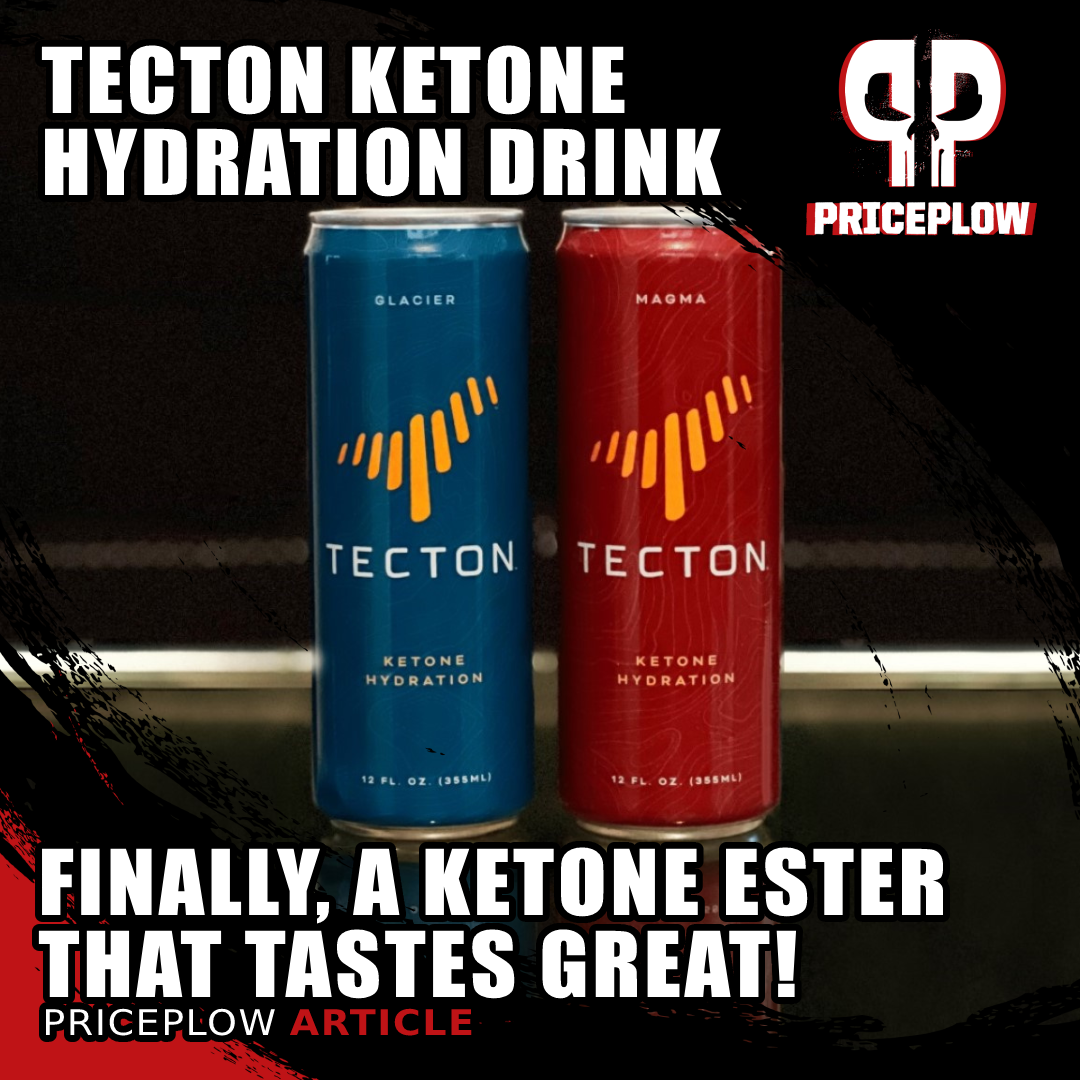
Introducing Tecton Ketone Hydration, a caffeine-free clean energy drink using Tecton's proprietary beta-hydroxybutyrate glyceride ketone ester -- finally, an ester that doesn't taste like rubbing alcohol!
The really exciting thing about this drink is the dosing potential. Because of the glyceride ester's unique properties, you can drink pretty much as many of these as you want in a day, every day, without suffering unwanted effects that plague other forms.
After years of watching this space, Tecton is the exogenous ketone supplement we always wanted – it represents the achievement of exogenous ketones' full potential, and is really what they should have been from the very beginning.
Below, we get into the background of ketones, then dig into the benefits of Tecton's proprietary ketone ester ingredient in their new clean energy drinks. But first, you can sign up for our Tecton news alerts and check on their Ketone Hydration Drink availability through PricePlow:
Tecton Ketone Hydration Drink – Deals and Price Drop Alerts
Get Price Alerts
No spam, no scams.
Disclosure: PricePlow relies on pricing from stores with which we have a business relationship. We work hard to keep pricing current, but you may find a better offer.
Posts are sponsored in part by the retailers and/or brands listed on this page.
This area is reserved for Team PricePlow's upcoming videos.
Subscribe to our channel and sign up for notifications so you catch it when it goes live!
Ketones: A Primer
The average American consumes the "standard American diet", a way of eating that's relatively high in processed fats and dietary carbohydrates, the latter of which come mostly from refined grains. This leaves most of us dependent on glucose to fuel our cells – especially our brain cells, as the brain consumes 20% to 25% of bodily glucose despite accounting for just 2% of our body weight.[1,2]
However, although this is the state of affairs today, it's not necessarily the historical norm. Before the agricultural revolution, many ancestral human cultures developed in environments where dietary carbohydrates were relatively scarce for at least half the year. This forced the people in those cultures to become fat-adapted – in the absence of easy access to carbs, their metabolisms habitually burned stored body fat for fuel.
Ketone bodies: generating energy from body fat
When the human body "burns" fat for fuel, in a process called beta-oxidation, it creates a ketone bodies as a chemical product.[3] These ketone molecules can be burned by every cell in the human body – including brain cells[4] – as an alternative to glucose.
The three types of ketone bodies are:
- Beta-hydroxybutyrate (← This is what we're talking about today)
- Acetoacetate
- Acetone
Ketones are synthesized mostly in the liver,[5] and used as cellular energy during times of food scarcity (or fasting), intensive exercise that uses up stored glycogen, and/or extremely low carbohydrate consumption.[6-8] In this state, called nutritional ketosis, the fat that gets converted into ketones by beta-oxidation can come from dietary fat or body (stored) fat. (See our beta-oxidation and ketogenesis flowchart image)
Ketones Are Why the Keto Diet Works
The ketogenic diet takes advantage of beta-oxidation by restricting dietary carbohydrate intake to the point where the body is forced to generate ketone bodies for fuel. Abbreviated to the keto diet for short, this way of eating enjoyed a meteoric rise in popularity during the 2010s, and has been used by millions upon millions of people all over the world to lose weight,[9-11] improve glycemic control and insulin signaling[12,13] improve metabolic and lipid blood markers,[14-16] reduce liver disease,[17] support cognition,[18,19] and far more.[20-23]
A landmark study from 2008 found that an incredible 95% of keto dieters with diagnosed type 2 diabetes were able to reduce or discontinue their medication within six months of starting a keto diet.[24] The renowned two-year-long Virta Health study reached similarly spectacular conclusions.[25-27]
Over time, ketogenic dieters exhibit higher total daily energy expenditure (TDEE) than sugar burners,[28,29] and lower levels of visceral fat,[30] a particularly harmful type of body fat that's strongly associated with insulin resistance.[31]
While all of this seemed exciting and novel back in the 2010s, the combination of fasting with ketogenic dieting has actually been practiced for thousands of years.[32] Ketogenic diets were used with great success in the 1920s to manage a variety of medical conditions, including epilepsy,[32] until institutional scientists took their managed consensus in a different direction during the 1970s.
How keto works: reducing glucose or producing ketones?
In understanding why the ketogenic diet works so fantastically well, we need to consider it from at least two angles: first, the reduction in blood glucose levels and insulin secretion; second, the production of ketones as an alternative fuel source.
So, does keto work because we're avoiding the damaging effects of blood sugar swings and chronically elevated insulin, or do the ketones themselves have some therapeutic value?
The answer is both – and naturally, if the ketones themselves have some kind of intrinsic benefit, the next question should be, can we benefit human health and performance by supplying even more ketones?
Why Tecton’s BHB Ester Is Superior To BHB Salts
As the diet was taking the mainstream by storm throughout the 2010s, supplement manufacturers responded to the trend by bringing various exogenous ketones to market. The benefits of exogenous ketones, which we'll discuss in depth, include:
- Greater energy levels
- Easier transition into nutritional ketosis
- Enhanced cognition
- Easier weight loss
- Decreased appetite
- Increased athletic endurance
- Better electrolyte balance
- Higher ketone blood levels
The most popular kind of exogenous ketone by far, even from the very beginning, was beta-hydroxybutyrate (BHB), the exogenous ketone that is the molecular backbone of Tecton's ketone ester.
Given the benefits of exogenous ketones we listed above, you'd think that the smart thing to do is take as much BHB as possible. You'd probably be right – but there's a catch.
We Don’t Want Mineral Overload
Back in the early days of ketone supplementation, BHB was almost always sold as some kind of BHB salt, with the BHB molecule chemically bound to a mineral like sodium, calcium, magnesium, or potassium. Using minerals as a delivery system for BHB really hamstrung exogenous ketone supplements, because you can definitely overdo it on the minerals! All the minerals listed above have an officially-defined tolerable upper limit (TUL), a daily threshold of consumption over which adverse health effects may begin to appear.

Ultimately, while savvy supplement users are fine with the challenge, it simply shouldn't take constant calculations to ensure safety and tolerance with an ingredient. What's the solution?
Tecton’s Ester Removes the Upper Limit on BHB Dosing
Fortunately, Tecton has a solution for this problem -- and they made it taste far better than the competition while they were at it.
What Tecton has done is create a BHB ketone ester in the form of beta-hydroxybutyrate glyceride. Recall that glyceride is a fatty acid ester of glycerol, a naturally-occurring alcohol that's routinely taken in massive quantities as an aid for cellular hydration. We've covered glycerol dozens of times on this blog, as it's commonly used in sports nutrition settings and is safely tolerated in large doses – up to 1g/kg in many studies.[33-35]
Since glycerol is extremely safe, and standard glycerol dosage ranges into the multiple tens of grams per serving, glycerol's safety profile imposes no practical limit on the amount of BHB-glyceride an individual can consume. This is a key innovation – Tecton has invented a proprietary form of BHB[36-39] that can be used as much as necessary, making it easier to tailor a BHB dose to the individual needs of the consumer or patient.
Tecton’s Ester vs. Other Esters
While competing ketone esters do exist, we think Tecton's new glyceride ester has some key advantages over the rest:
-
Tecton’s ester tastes better
Other ketone esters simply taste awful. They're effective for those who can stomach them, but next to nobody wants something that tastes so terrible, let alone less efficacious dosing. This is why we're pleased to report that Tecton's drink has no alcoholic taste, unlike its competitors.
This is no trivial advantage – having the ability to quaff multiple cans of ketone ester beverages enables some incredibly potent effects. The Tecton flavors are just better -- plain and simple -- and make it super easy to achieve therapeutic concentrations of ketones.
-
Does not contain toxic substances
All competing esters also contain 1,3-butanediol, a diol alcohol that can increase the body's endogenous production of BHB. While this sounds nice in theory, one study that gave rats enough 1,3-Butanediol to therapeutically raise their serum BHB levels found that the alcohol also caused significant body mass loss, dehydration, metabolic acidosis, and sinusoidal dilation.[40]
These are outcomes we definitely want to avoid. That's why we love the fact that Tecton's glyceride ester doesn't contain any 1,3-butanediol.
Moreover, Tecton's BHB has been granted self-affirmed GRAS status, allowing it to be used in foods and dietary supplements.
Benefits of Exogenous Ketones
The best thing about exogenous ketones is that they're therapeutic for everyone. Although ketogenic dieters can definitely benefit from extra ketone support, you don't need to be in a state of nutritional ketosis for exogenous ketones to work.[41] In other words, exogenous ketones are beneficial for both high-carb and low-carb dieters!
Although in the beginning, ketones were marketed almost exclusively to low-carb dieters, a few years' retrospect has shown how limiting this approach really was. As early as the 1990s, animal research was showing that exogenous ketones can spare glucose by taking its place as a fuel source for cellular-metabolic machinery. The upshot of this is greater metabolic flexibility during exercise, decreased lactic acid production, and enhanced performance.[42]
-
Exogenous Ketones In Human Athletes
The limited number of studies conducted on human use of exogenous ketones during athletic performance shows that, while ketones don't do much to support anaerobic efforts (i.e., sprints),[43,44] they do have great potential for use in endurance sports.[45] They can delay the onset of muscular fatigue by decreasing lactic acid production,[46] and also help protect the athlete's cognitive abilities from being compromised by physical exhaustion.[44]
-
Can improve Traumatic Brain Injury (TBI) and concussion outcomes
Of particular importance for athletes – especially athletes in contact sports like rugby, hockey, and football – is exogenous ketones' ability to help improve outcomes in concussions and TBIs.
Subjecting the brain to trauma initiates a neurometabolic cascade of neuronal dysfunction and adaptation. Part of this cascade is a dramatic impairment in the brain's ability to take up glucose as a neuronal fuel source. Since the brain depends on an uninterrupted supply of cellular energy to survive, losing the ability to burn glucose can put your precious and irreplaceable neurons at serious risk of death.[47] Neuronal death from lack of cellular energy is a significant factor in damage to the brain following concussion.
Although proper outcome-oriented studies haven't yet been conducted in humans,[48] animal research shows that the administration of exogenous ketones can significantly increase the survivability of neural tissue following TBI.[49]
One of Tecton's several battles in the force for good is working to combat TBI in sports and military applications. Tecton's Ketone Ester can potentially be a game-changer in this field
TBI is actually a primary driver of Tecton's development, and is something we hope to cover in detail in a future episode of the PricePlow Podcast.
Why use Tecton’s exogenous ketone ester for concussion?
As one 2021 research review points out, achieving therapeutic blood ketone levels through nutritional ketosis, at least in a person who's not already fat-adapted, takes 3-5 days.[50] That's not nearly fast enough, considering that post-concussive metabolic derangement begins to affect the brain within 6 hours after injury.[50]
Exogenous ketones, on the other hand, can achieve that concentration in a mere 30 minutes.[50] This makes them a much more reliable method for supporting cerebral metabolism.
As the same review points out,
"Oral administration of ketone salts can raise circulating levels of β-hydroxybutyrate to 1.0 mM, but limitations exist with gastrointestinal tolerability and the high mineral load."[50]
This just drives home the importance of using a ketone ester like Tecton's for supporting the brain after concussion – again, esterifying BHB practically eliminates the limitations that need to be considered when administering a ketone salt!
-
Supports Healthy Cognition, Reduces Anxiety
But exogenous ketones aren't just for a brain in crisis. Research shows they can help support healthy cognition as well. More specifically, two animal studies have found that exogenous ketones can help reduce the incidence of anxious behavior in animals.[51,52]
Exogenous ketones for neurodegenerative illness
One of these studies, which was actually conducted using ketone esters, found that the ketones also reversed some of the cognitive deficits in the study's model for Alzheimer's disease. The study used 3xTgAD mice, which are genetically prone to the amyloid and tau pathologies that give rise to the brain plaque formations in Alzheimer's. Compared to a group that ate carbohydrate-rich food, the 3xTgAD mice fed with BHB-elevating ketone esters did significantly better on learning and memory tests.[51]
The authors propose that the ketones' beneficial impact on mitochondrial function and inflammatory processes are probably behind these improvements in cognitive function.[51]
-
Suppresses Appetite
A 2017 study found that consuming an exogenous ketone ester drink that's designed to raise blood BHB levels significantly decreased appetite, insulin secretion, and ghrelin secretion.[53] That last point matters a lot because ghrelin is the body's main hunger hormone. The higher your ghrelin, the more you want to eat.[54]
This study corroborates an anecdotal report we consistently see from keto dieters – that the keto diet leaves them a lot less hungry than normal.
Weight loss?
Although there are about a million studies on ketogenic dieting and weight loss, research on exogenous ketones' anti-obesity effect in humans remains in a preclinical state. However, there's some compelling evidence from animal models. For example, in one study, overweight mice that had been on a high-fat diet for 10 weeks (in other words, they were already fat-adapted) burned more calories and lost significant amounts of body fat when given exogenous ketones for another 3 months.[55]
-
Improves Markers of Cardiovascular Health
A 2017 study found that exogenous ketone supplements decreased glucose blood levels, free fatty acids, and triglycerides.[56] All three changes can be a major boon for cardiovascular health. Another study found that taking ketone sales for 6 weeks can decrease blood pressure in subjects between 18 and 35 years old.[57]
Another 2017 study found that BHB salts can improve blood lipids and decrease visceral fat in rats. Importantly, this study showed higher HDL and lower triglycerides, and lower LDL levels.[58] This combination is considered to be a trifecta of cardiovascular health - especially considering the importance of HDL/triglyceride ratio[59-63] and their connection to insulin resistance.[59,64]
Conclusion: Tecton is here to upend the BHB market
We see several really clear uses cases for Tecton:
- Weight loss. We think the evidence that exogenous ketones can suppress appetite and promote healthy weight loss is compelling enough to give Tecton a shot in this role.
- Clean energy support during intermittent fasting. The traditional advice regarding big IF proponents has been to use caffeine as a metabolic crutch whenever one is feeling down during a fast. We think this is a pretty bad idea for a number of reasons, and Tecton represents a vastly superior strategy.
- Ease the transition to ketogenic diet or fasting-focused lifestyle. Getting into these is not easy, and many people struggle with the "keto flu" -- a kind of withdrawal syndrome most experience after eliminating dietary carbohydrates as a primary energy source. With Tecton, you can give yourself an alternative energy source pretty much immediately, instead of waiting days or weeks for your body to become fully fat-adapted.
- Cognitive energy. Tecton might be a great thing to help get you through the dreaded afternoon energy slump, particularly if you have any cognitive focus issues. We've seen the meteoric rise of nootropic supplements over the years, but few things can beat an actual energy substrate that feels clean like ketones. Tecton should give much more stable energy without setting you up for the compromised sleep quality, metabolic dysfunction, and weight gain that typically follow a reliance on caffeine and sugar to get through this challenging part of the day.
For athletes. As we discussed earlier, there's great evidence that exogenous ketones can support athletic and mental performance. We think Tecton might be good for helping you get in "the zone" before a big game or important performance.
- Metabolic health support. Metabolic flexibility — the ability to burn glucose and fatty acids for energy — is one of the keys to aging well. By directly supplying your body with ketones, you can help promote metabolic flexibility even if you've already begun to show signs of insulin resistance. Tecton is an especially attractive option for type 2 diabetics, as these patients should consume neither sugar nor caffeine — two ingredients that are excluded from Tecton.[65]
Ready to try?
Tecton is available in sugar and caffeine-free 12 ounce cans that are naturally flavored and sweetened, each with 10 grams of nature-identical ketones. But as major fans of the dietary supplement space, we're also excited that Tecton is open to licensing their ingredient -- and it can be put into dry applications -- so we just may see it in other types of energy drinks, nootropics, and workout supplements formulated by experts around the industry.
Sign up for our Tecton alerts below so that you don't miss out on future Tecton news, otherwise, check out a few cans using PricePlow:
Tecton Ketone Hydration Drink – Deals and Price Drop Alerts
Get Price Alerts
No spam, no scams.
Disclosure: PricePlow relies on pricing from stores with which we have a business relationship. We work hard to keep pricing current, but you may find a better offer.
Posts are sponsored in part by the retailers and/or brands listed on this page.
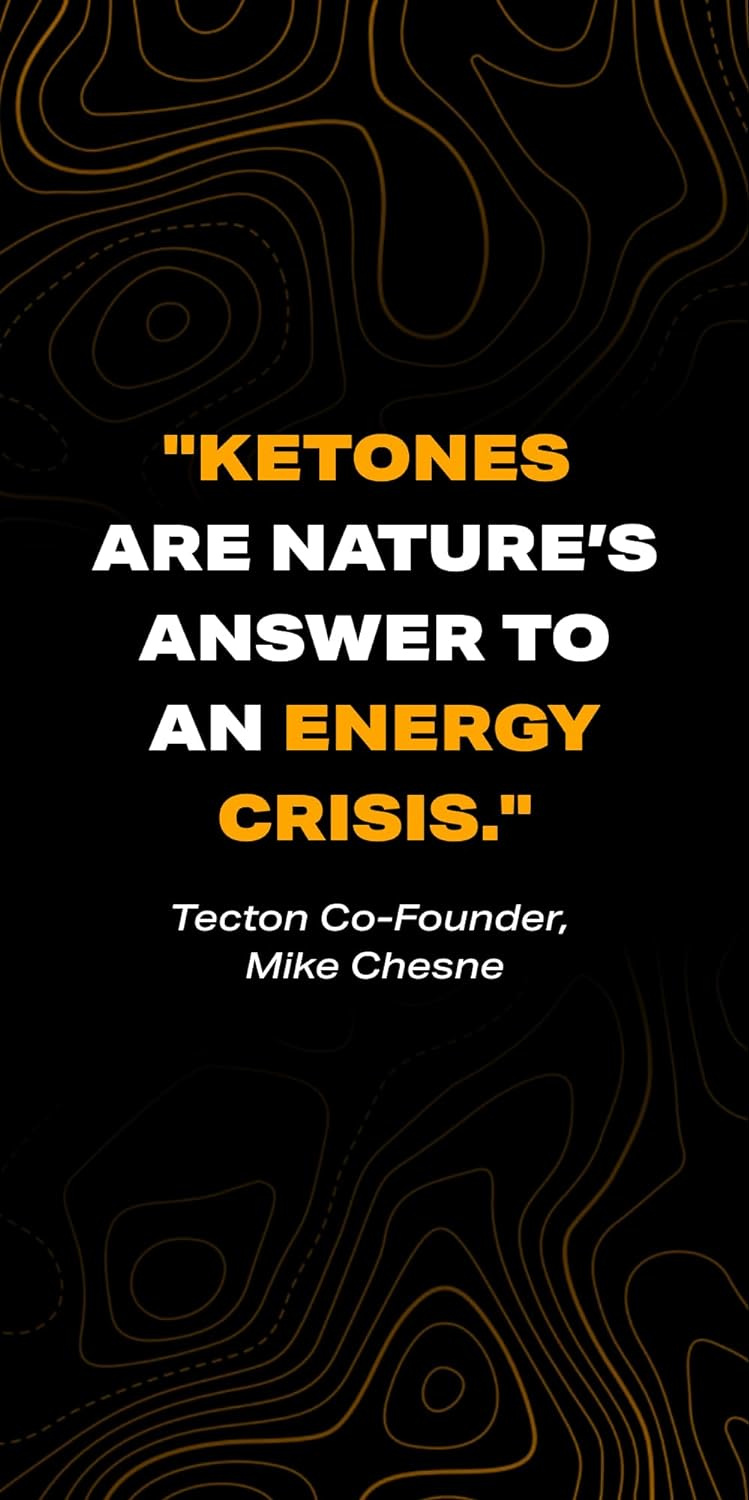
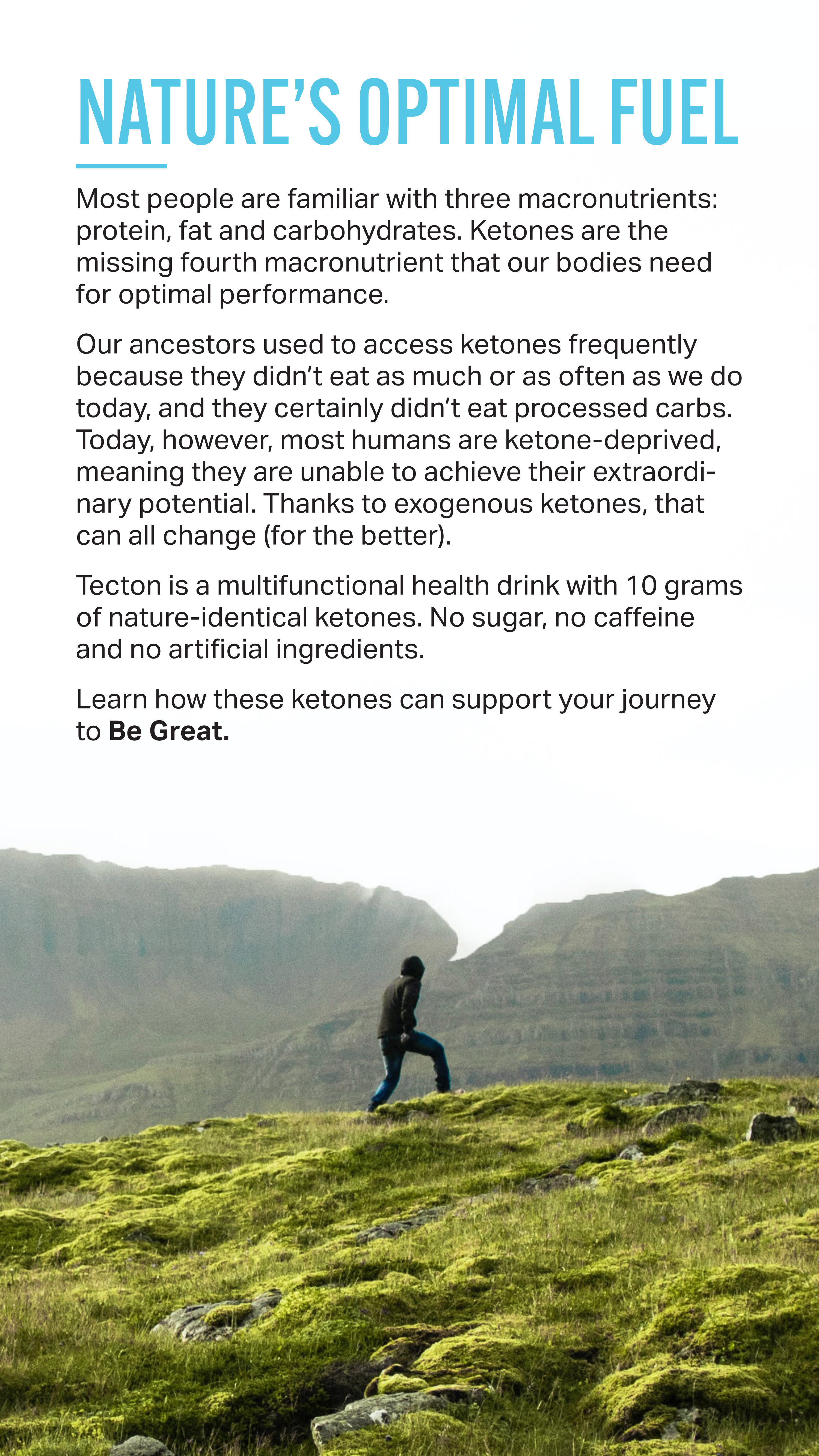
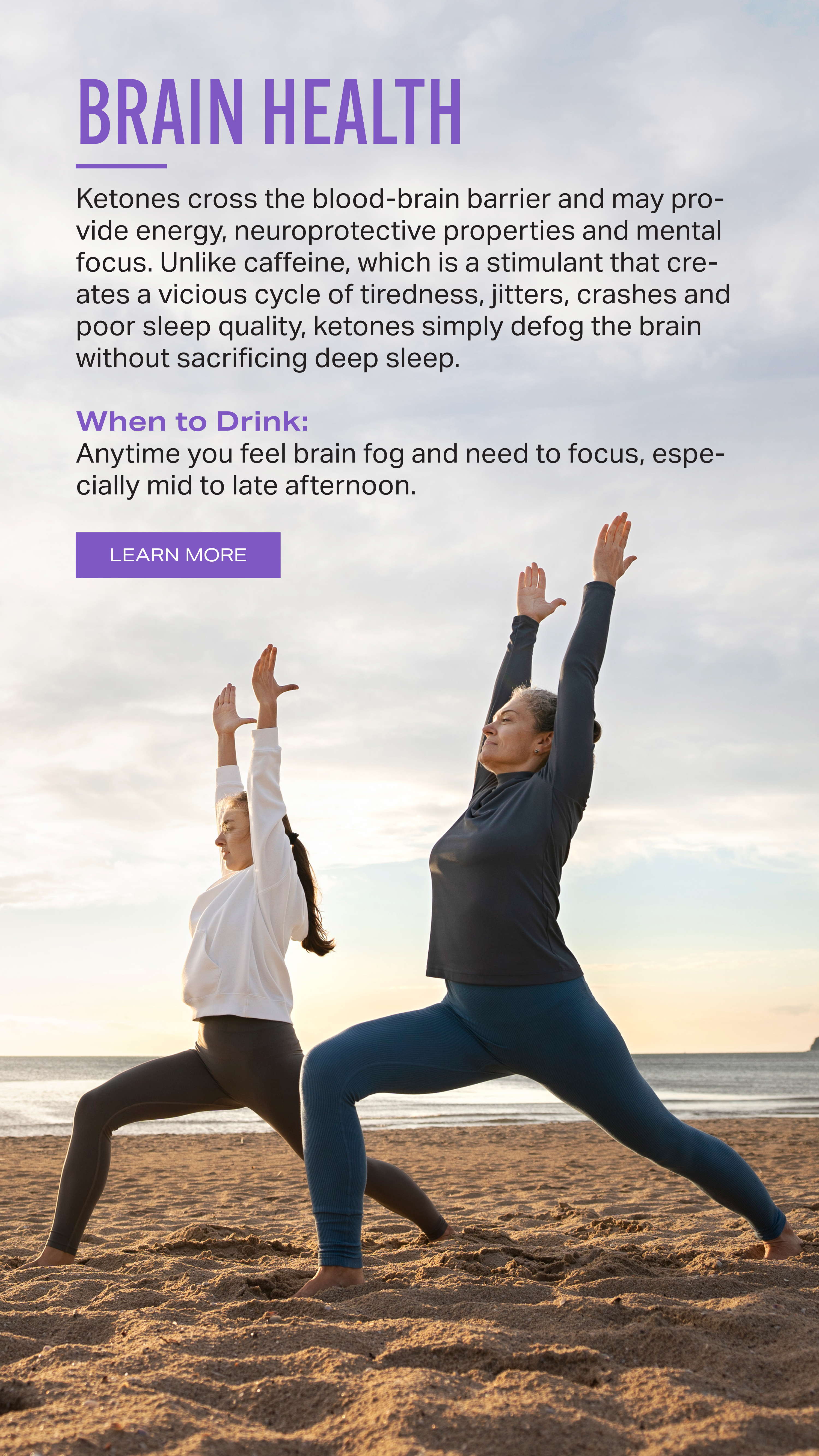

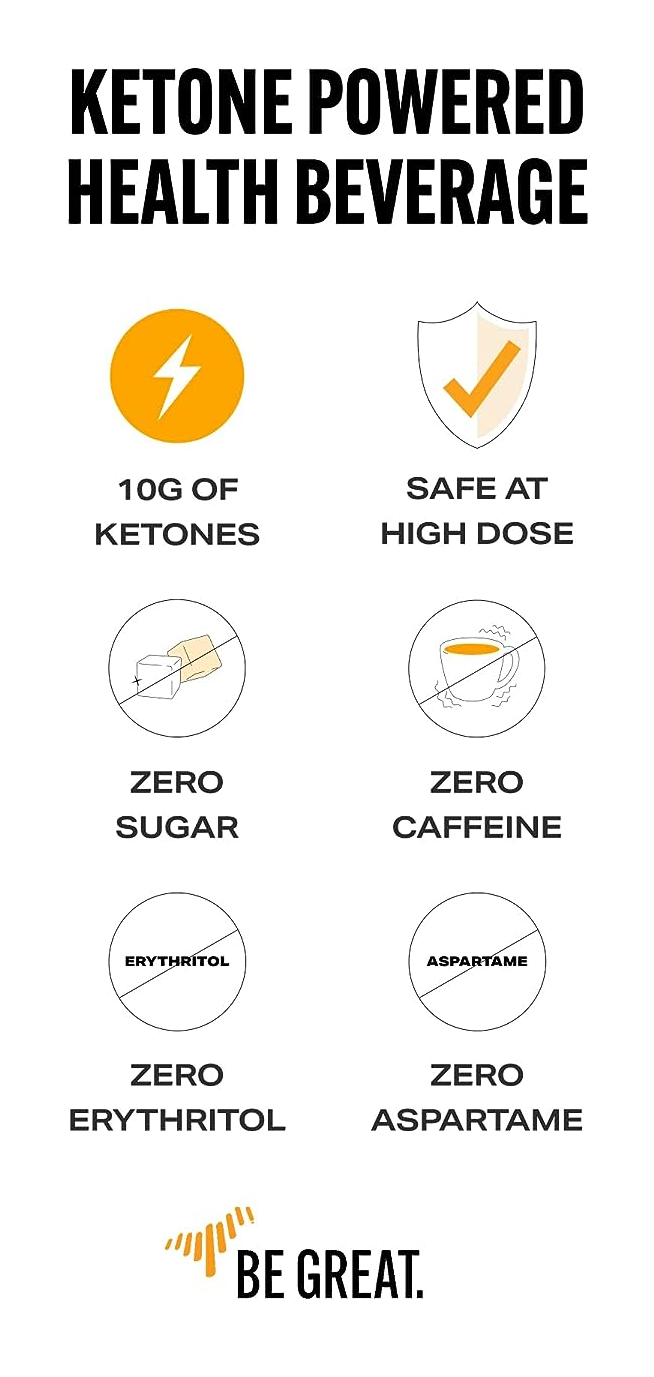
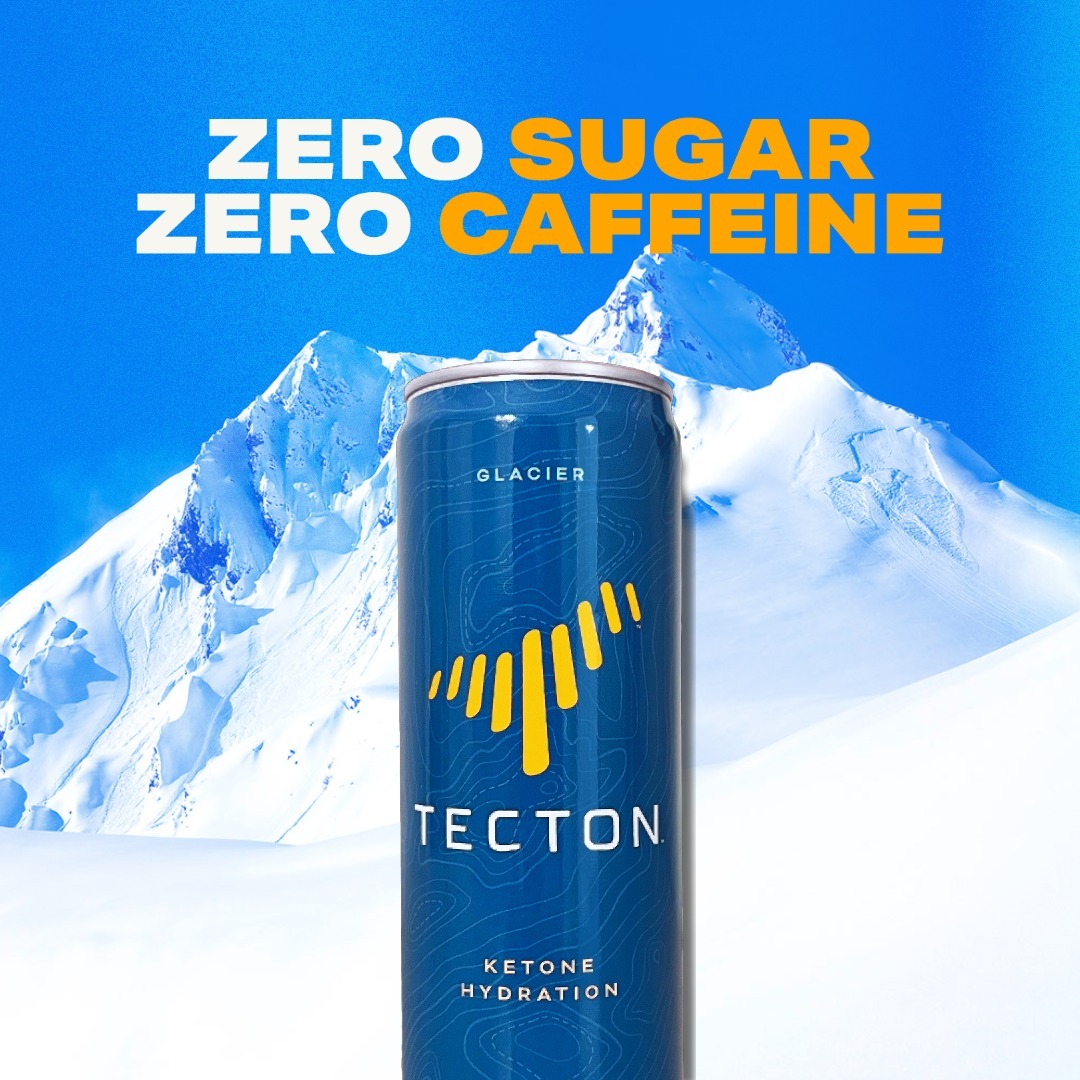

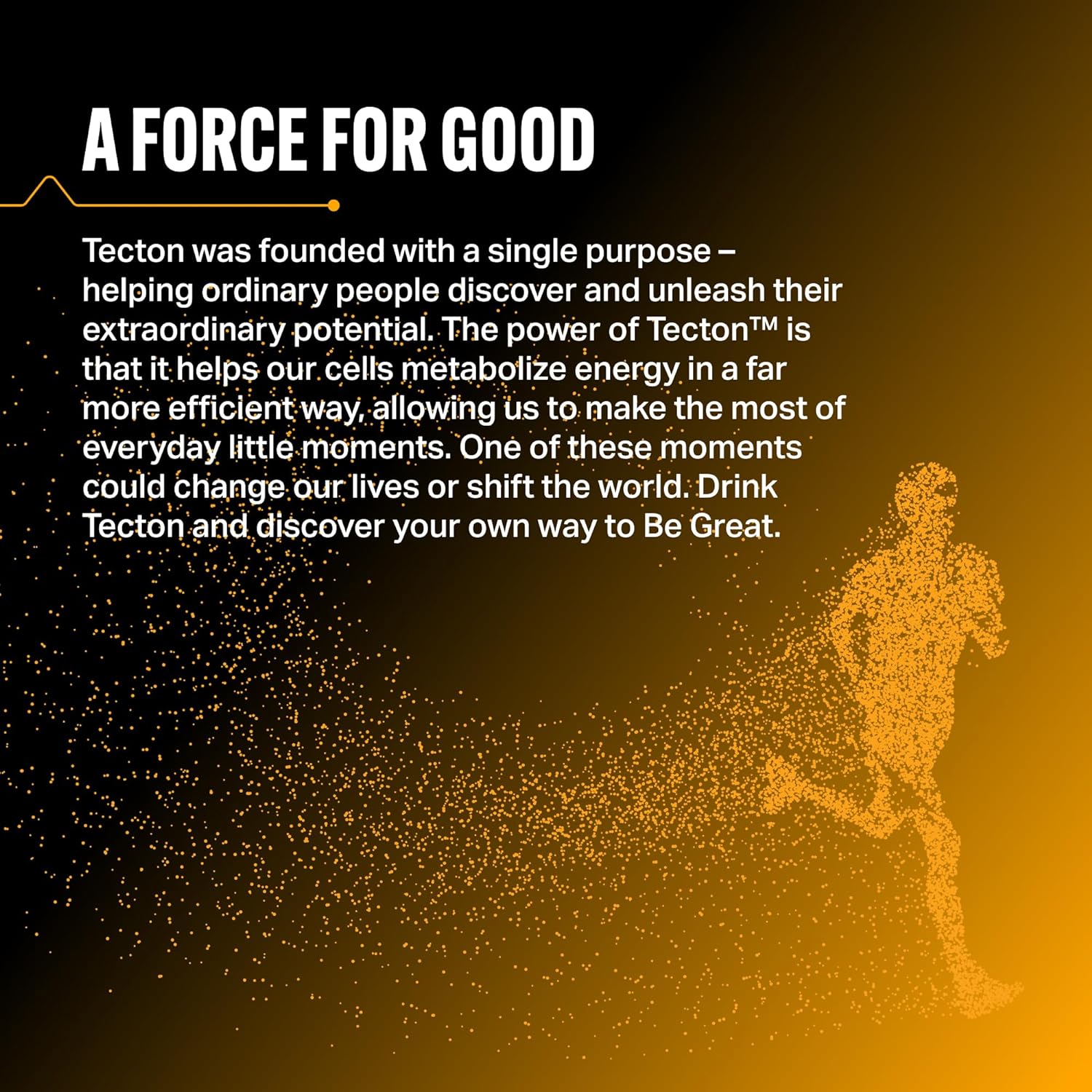
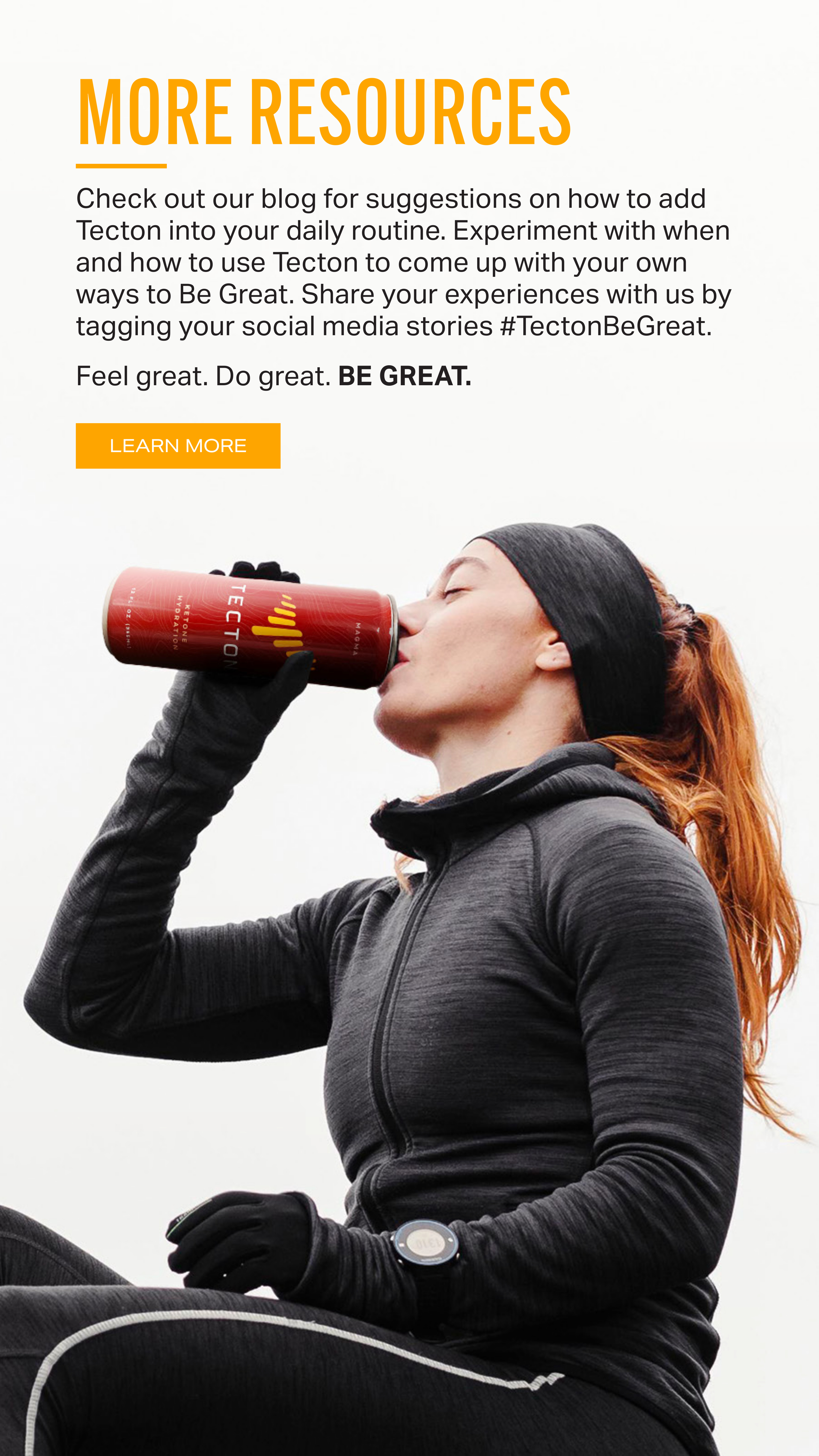
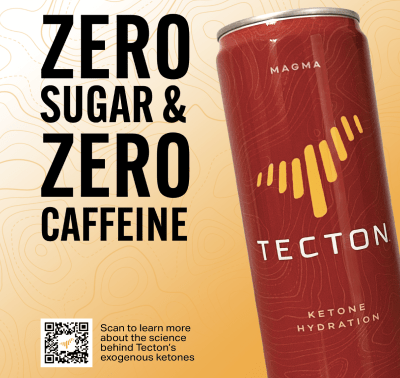
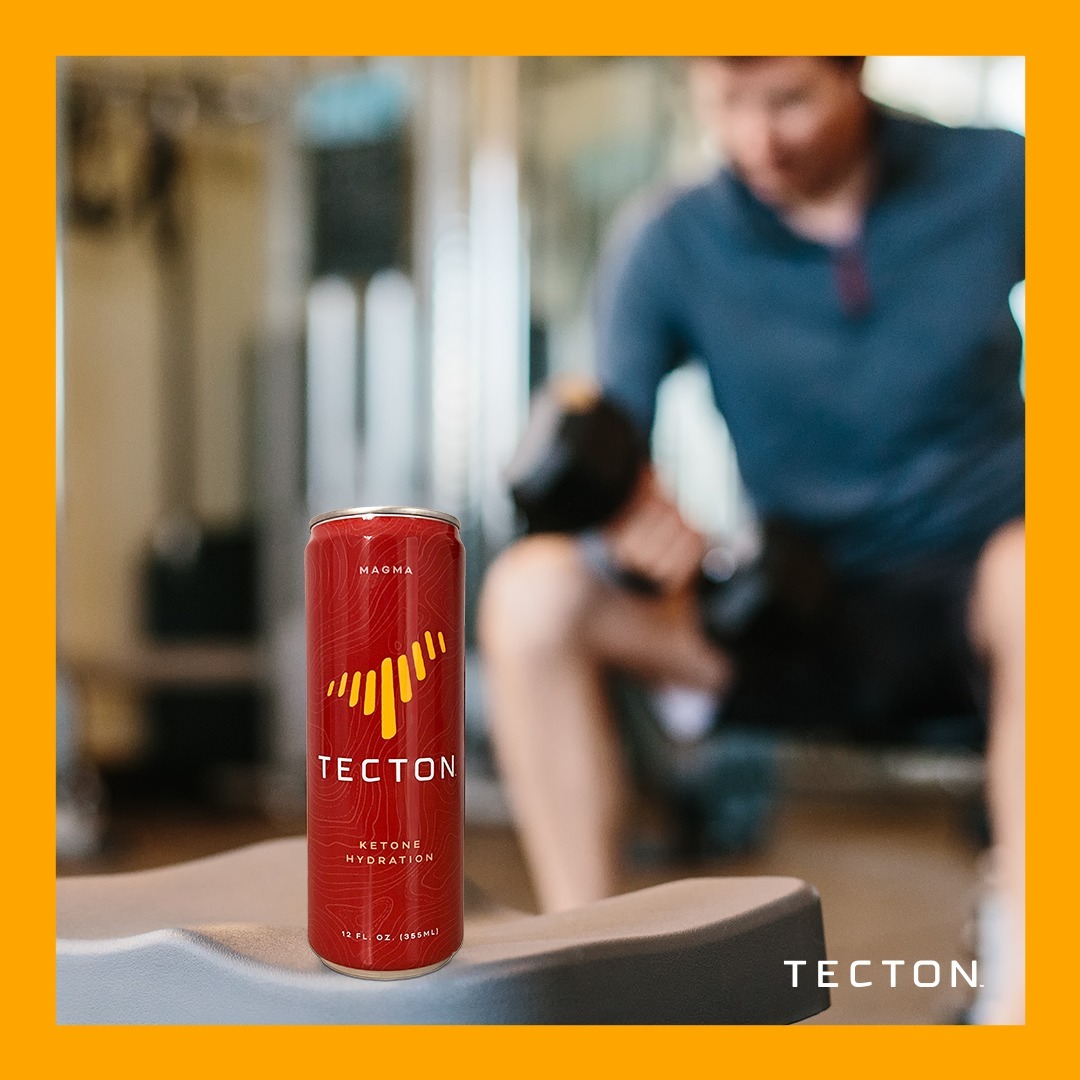



Comments and Discussion (Powered by the PricePlow Forum)